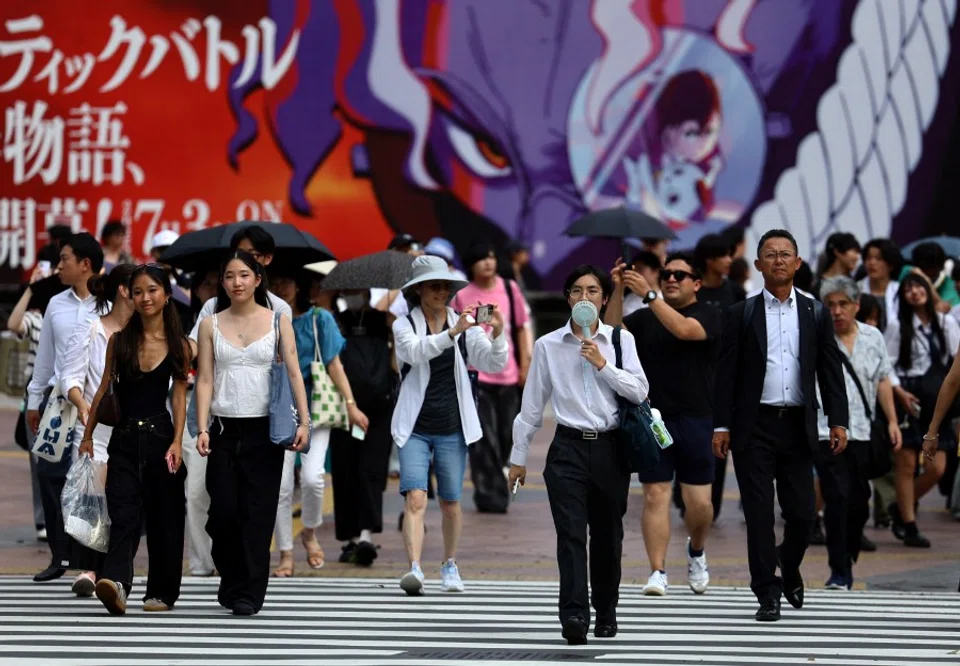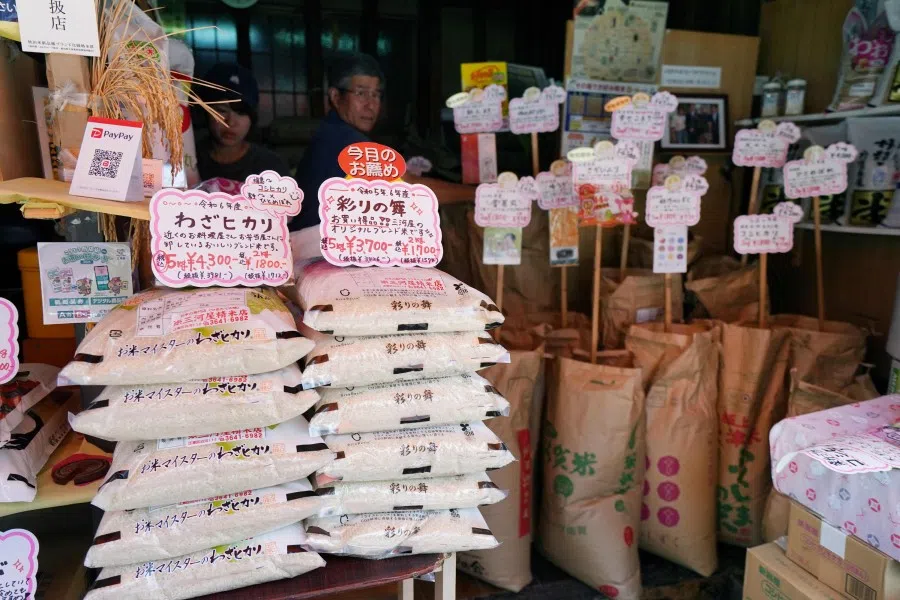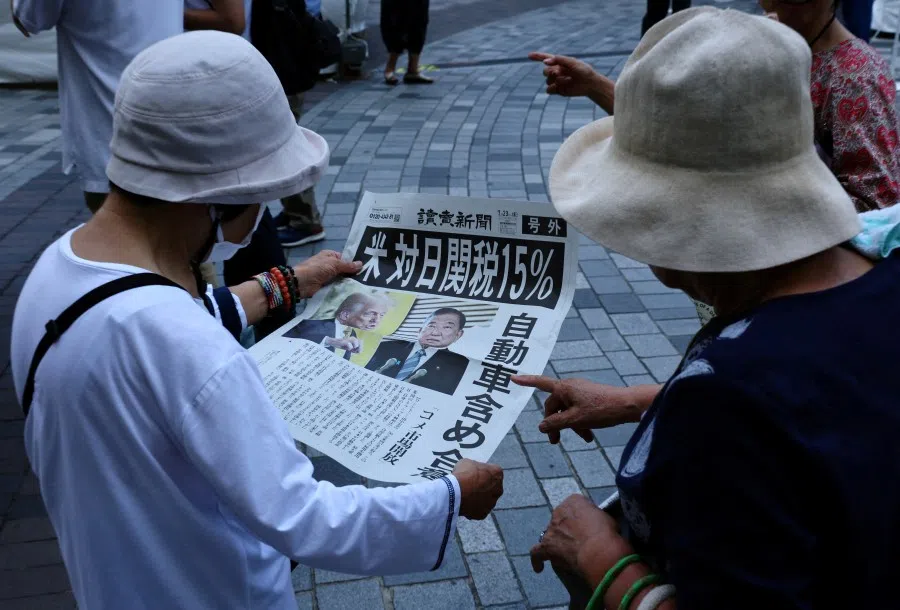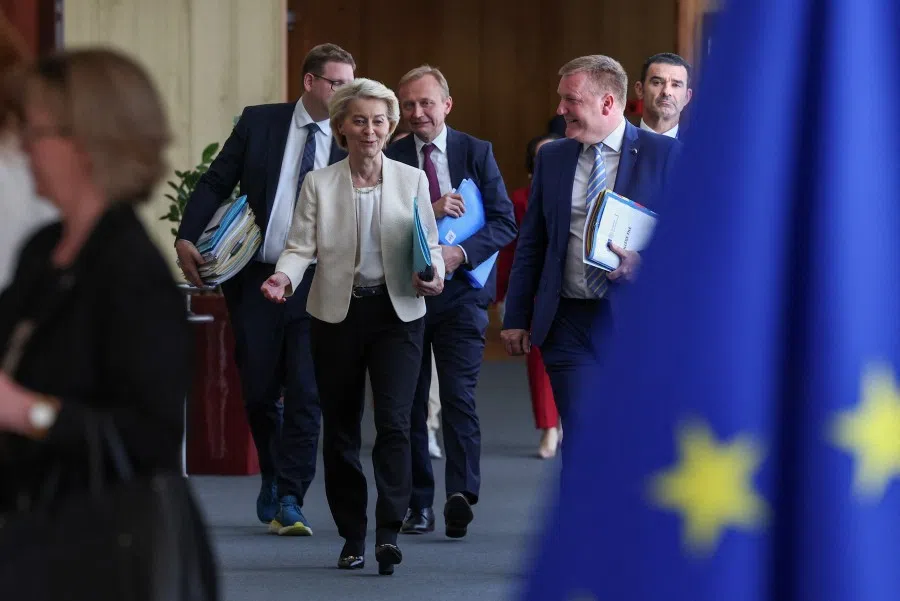Trump’s trade war is testing Japan — and America’s alliances
As the 1 August deadline for negotiations on US global tariffs looms, the US has recently struck a deal with Japan. Could this be a model for the US’s negotiations with other countries? Japanese academic Seiko Mimaki analyses the situation.

It was a sudden agreement. On 22 July, two days after the ruling Liberal Democratic Party lost a significant number of seats in Japan’s upper house election, President Donald Trump announced on social media, “We just completed a massive Deal with Japan, perhaps the largest Deal ever made,” thereby announcing the conclusion of the US-Japan tariff negotiations. Tariffs on automobiles were lowered from 25% to 15%, as were “reciprocal tariffs”. Prior to that, Vietnam and Indonesia, countries with which the US has a trade deficit, had concluded tariff negotiations, agreeing to tariffs of 20% and 19%, respectively. This agreement with Japan was reached at a lower tariff rate.
Japan’s heavy price paid for a deal
However, Japan will also pay a considerable price for this agreement. In the aforementioned social media post, Trump boasted, “Japan will invest, at my direction, $550 Billion Dollars into the United States, which will receive 90% of the Profits,” and “This Deal will create Hundreds of Thousands of Jobs”. The Japan Invest America Initiative, a huge investment plan agreed upon by Trump and Ryosei Akazawa (the minister in charge of economic revitalization who was appointed tariff negotiator by Prime Minister Shigeru Ishiba), was presented in a May draft with an estimated investment amount of about US$100 billion in the US. However, this amount was increased to US$400 billion. Then, Trump personally requested US$550 billion during the meeting, and this figure was agreed upon.
... the 50% tariff on steel and aluminum will remain. Although there are various concerns and issues remaining with this agreement, it is still good news for Japan that the tariff on automobiles, which are its main export, has been reduced.
Furthermore, Trump emphasised in the social media post that “Japan will open their Country to Trade including Cars and Trucks, Rice and certain other Agricultural Products, and other things”. Specifically, this includes purchasing 100 Boeing aircraft, increasing the proportion of American rice imported and buying US$8 billion (about 1.2 trillion yen) worth of American products, including agricultural products. Japan will also increase its defence spending.
Not only that, the 50% tariff on steel and aluminum will remain. Although there are various concerns and issues remaining with this agreement, it is still good news for Japan that the tariff on automobiles, which are its main export, has been reduced. Why did the difficult negotiations come to fruition?
Rice imports a key bargaining chip
One key factor was Japan’s concessions on rice imports. Under a system called “minimum access”, Japan imports about 770,000 tons of rice per year without tariffs. Last year, Japan imported about 340,000 tons of rice from the US. Going forward, Japan will increase its imports of American rice within the framework of “minimum access”.
Initially, Minister Akazawa denied using rice as a bargaining chip between Japan and the US, probably because he did not want to lose the support of farmers ahead of the upcoming upper house election. First, even if Japan increased its imports of American rice, it would hardly eliminate the trade deficit that Trump is so concerned about. However, Trump considers rice tariffs to be a symbol of the closed nature of the Japanese market, and has repeatedly criticised Japan for imposing a 700% tariff on rice (in reality, Japan imposes a tariff of about 200% on rice). The Japan-US tariff negotiations concluded this time due to Trump’s appreciation of Japan’s rice concessions, as he wanted a symbolic victory to appeal to his supporters.
Trump appears to have welcomed Japan’s concessions on automobiles as a symbolic victory.

Japan and the US have also agreed to exempt cars imported from the US from additional safety tests. Trump has raised concerns about the fact that American-made cars are hardly selling in the Japanese market, and has criticized Japanese car safety standards as “non-tariff barriers”.
it is true that American cars are not selling well in Japan. In 2024, annual sales were down 80% from the 1996 peak, with American cars accounting for only 0.4% of new car sales, less than 10% of all imported car sales.
However, it has been pointed out that the reason American cars are not chosen in Japan is not due to non-tariff barriers such as exhaust gas regulations and safety standards, but rather due to the fact that American companies have neglected to develop products suitable for the Japanese market, resulting in problems such as large car body size and poor fuel efficiency that have not been resolved. It remains to be seen how much this measure will increase American car exports to Japan. Nevertheless, Trump appears to have welcomed Japan’s concessions on automobiles as a symbolic victory.
Japan’s deal as a model for negotiations with other countries
The US also seems keen to use this Japan-US tariff agreement as an opportunity to speed up negotiations with other countries. Trump initially pledged to “conclude deals with 90 countries in 90 days”, yet only three countries have concluded tariff negotiations with the US thus far: the UK, Vietnam and Indonesia. Apparently frustrated by the stalled negotiations, on 7 July, Trump sent letters to 14 countries, including Japan, unilaterally notifying them of the tariff rates.
The letters sent to each country were identical in content except for the tariff rates and recipients, and included some almost threatening content, such as warning that “If for any reason you decide to raise your Tariffs, then, whatever the number you choose to raise them by, will be added onto the [specified tariff] that we charge”. The letter sent to Japan stated that a 25% tariff would be imposed on Japanese imports starting 1 August. However, it also said that “these tariffs may be modified, upward or downward” and reiterated demands for market liberalization and the elimination of non-tariff barriers.
Even if there has been a slight course correction, however, the Trump tariffs have already brought about unfavourable and perhaps irreversible changes to the international trade structure and financial order for the US.

Trump must have thought that Japan, which depends on the US for security, would be one of the easiest countries to shake. However, Japan was unlikely to give in. Trump’s impatience was evident in the letter. Failing to conclude trade agreements with other countries by 1 August would be a major setback for the US. Treasury Secretary Scott Bessent revealed that tariff revenues will exceed US$300 billion (about 43 trillion yen) this year, but American consumers and companies will bear most of the burden.
For now, many companies have chosen to absorb as much of the tariff cost as possible themselves, rather than adding it to sales prices, but there is a limit to how much they can do, and sooner or later imported goods with high tariffs will be sold in earnest on the American market. Concerns about this are already beginning to appear in American opinion polls. According to a recent Politico-Public First poll, one in four Trump voters expressed negative views about his tariff policy, saying it is hurting trade negotiations. Frustration over the stalled tariff negotiations is spreading even among Trump supporters.
Even if there has been a slight course correction, however, the Trump tariffs have already brought about unfavourable and perhaps irreversible changes to the international trade structure and financial order for the US. The BRICS countries — made up of powerful emerging nations such as China, Russia, and Brazil — have intensified their criticism of Trump’s tariffs, and are showing signs of pursuing alternative currencies and trade settlement methods that do not use the US dollar. While there is very little prospect of a BRICS common currency or an alternative currency, such as the renminbi, emerging in the near future, this could shake up the US-led international financial order in the long term.
Trump seems unaware that his irrational tariff policy is accelerating the movement of countries away from the dollar.
Trump has cautioned: “We are going to require a commitment from these seemingly hostile Countries that they will neither create a new BRICS Currency, nor back any other Currency to replace the mighty U.S. Dollar or, they will face 100% Tariffs,” and “Any country aligning themselves with the anti‑American policies of BRICS, will be charged an ADDITIONAL 10% Tariff”. Trump seems unaware that his irrational tariff policy is accelerating the movement of countries away from the dollar.
Finding alternatives
Six months have passed since the inauguration. After experiencing the economic turmoil brought about by the Trump administration, allies and friendly nations are finally beginning to view diversifying export destinations and creating a trade order that is not overly dependent on the US as realistic challenges.
Shortly after a 30% tariff was announced for the EU, the group announced its agreement to establish a comprehensive economic partnership with Indonesia.
Once the agreement takes effect, tariffs on trade between the two regions will be significantly reduced. At a joint press conference, EU President Ursula von der Leyen, speaking to Indonesian President Prabowo Subianto, said: “We are living in turbulent times, and when economic uncertainty meets geopolitical volatility, partners like us must come closer together.”

The Trump administration has imposed high tariffs without exception, even on important partners not only in the economic sphere but also in the security and military spheres, such as Japan, South Korea and the EU. In contrast, Russia, North Korea, Belarus and other countries remain exempt from reciprocal tariffs.
The Trump administration has cited either minimal trade volumes or existing high sanctions as the reason for not raising tariffs on these countries. However, while US imports from Russia amount to about US$3 billion, a 29% tariff is imposed on areas with a small trade volume of about US$200,000, such as the Australian territory of Norfolk Island.
This tariff policy can be seen as unique to Trump, who has no interest in standing in solidarity with countries that share democratic values and standing up to authoritarian countries.
Russia exports important resources to the US, such as fertilisers, minerals, nuclear fuel and timber. However, the US can import almost the same items from Canada. Rather than cutting off imports from Russia for its aggression in Ukraine and exerting further pressure on Russia, the Trump administration has chosen to impose a 35% tariff on its ally Canada and wage a fierce trade war with it. This tariff policy can be seen as unique to Trump, who has no interest in standing in solidarity with countries that share democratic values and standing up to authoritarian countries.
Tariffs threaten alliances
The misuse of tariff policies is beginning to shake the alliance network that was an important source of American power during the postwar period. According to the Pew Research Center’s latest survey of 24 countries, the favourability of the US has declined in many countries. Most of the major American allies, including France, the UK, Germany, South Korea, and Japan, view Trump’s foreign policy negatively.
When asked if they have “a lot or some confidence in US President Donald Trump to do the right thing regarding world affairs”, the majority of respondents in 19 out of 24 countries answered “little confidence” or “no confidence”. Trump’s ruthless tariff policy, which also targets allies, is steadily eroding the trust and soft power America has cultivated with its allies since the end of the war.
As an ally, Japan cannot afford to rest on its laurels just because the tariff negotiations have concluded. It must persistently urge the US to adopt policies that will truly “make America great”.





